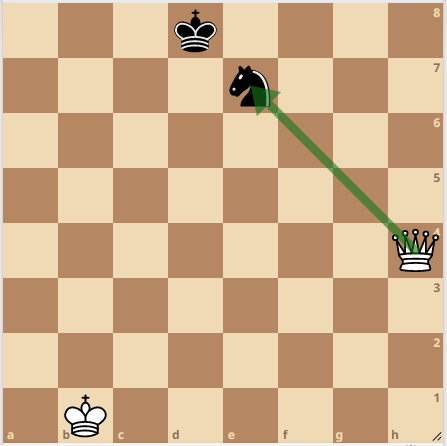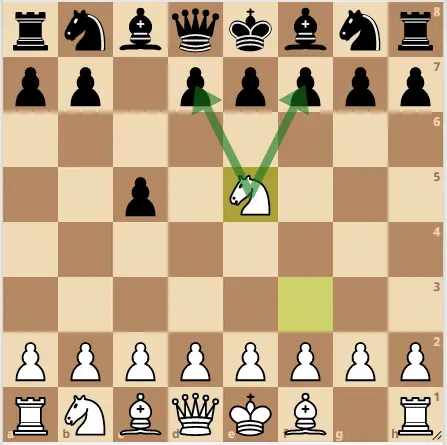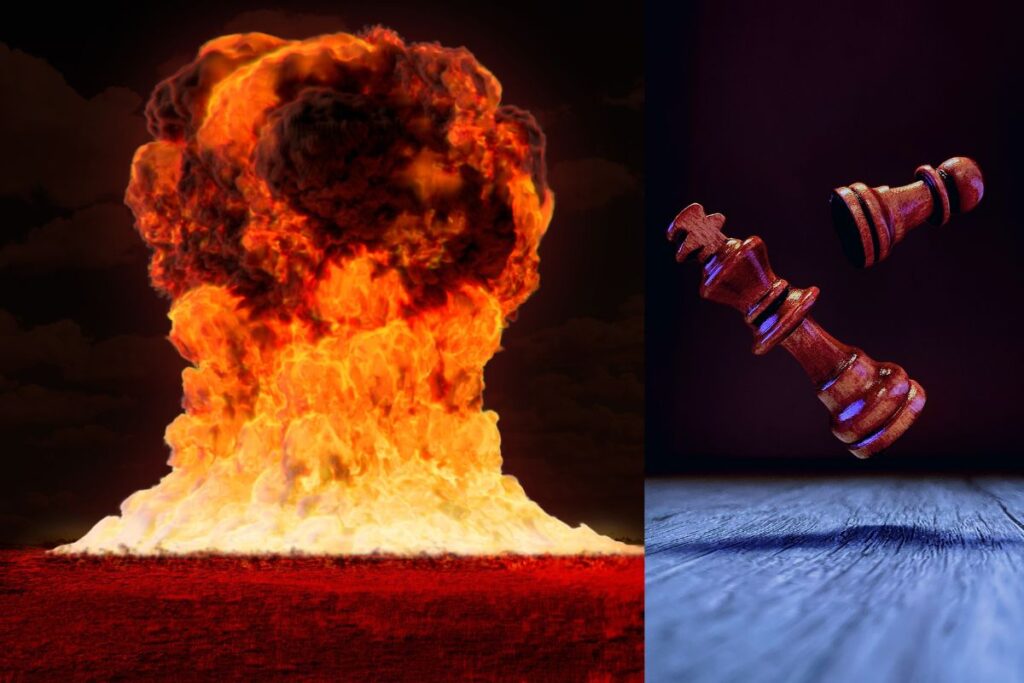If you’re familiar with the basic movements of chess pieces, then you already have what it takes to start playing atomic chess. However, there’s one fundamental difference; explosions!
When one piece captures another, not only are both pieces destroyed, but all the pieces standing on the eight surrounding squares also explode and are taken off the board, except for the pawns.
While, at first glance, the rules might seem simple enough, this explosion feature affects different aspects of the game. Openings and the capturing mechanics will change so you can minimize the pieces you lose when the explosion happens.
So how to play atomic chess? In this article, we’ll tell you all about it!
What Is Atomic Chess?
Atomic chess is a chess variant that adds a little twist to the capturing mechanics of regular chess.
In atomic chess, when one piece captures another, a 3×3 explosion occurs around the square the capturing piece lands on.
The explosion destroys both pieces involved in the capture and any piece standing within range. However, any pawns present in the range of the explosion are left unharmed.
How to Play Atomic Chess
Let’s see how the different aspects of atomic chess work together in a match.
How to Win?
Like regular chess, you win in an atomic game by targeting your opponent’s king. You have two choices here, the first is to checkmate the king like you would do in normal chess by attacking it with a piece while it has nowhere to go.
The second choice is to explode the king. Here’s how it works:
If you threaten your opponent’s king with one of your pieces, your opponent can either move it out of danger or block your attacking piece using one of his own. In other words, you can’t explode the king by attacking it directly.
However, what you can do is capture a piece whose explosion will catch the opponent’s king. That way, you explode the king.
Let’s have an example. Say that your opponent’s king is sitting on d8 and a knight on e7. You have a queen on h4 and it’s your turn to play.
If you take the e7 knight with your queen, the explosion will reach the king in d8 and you win the game.

Resulting position after explosion: White wins by exploding the black king

How the Pawn Works
As mentioned before, the pawns are the only pieces that aren’t caught in the explosion. However, if the pawn captures another pawn, both pawns will explode. The explosion will take out all the surrounding pieces, except for other pawns that weren’t involved in the attack.
This can make things really interesting when you capture an opponent’s pawn indirectly with your own using en passant.
During en passant, even though your opponent’s pawn is right next to yours, you can move diagonally to capture it.
You’d think that means the explosion radius occurs where the captured pawn was standing. However, the explosion occurs around the attacking pawn.
For example, a White pawn moving from e5 to f6 to capture a Black pawn standing on f5 will result in an explosion reaching e7, f7, and g7.
Rules of a Stalemate
Can atomic chess end in a stalemate? Yes, while it’s rare, an atomic game can end in a stalemate.
The rules for a stalemate in atomic chess are the same as in regular chess.
If a player has no legal moves to make and the opposing player doesn’t have the king in check, the game ends in a stalemate.
How to Change Your Mentality in Atomic Chess?
Given the different circumstances of the game, you’ll have to approach this variant with a new perspective.
In regular chess, mistakes will shift the game in your opponent’s favor. However, the opponent usually takes a considerable number of moves to capitalize on that mistake, unless you’ve made a really bad blunder.
In atomic chess, though, you can lose or win a match right after one wrong move. Pieces around the king aren’t protecting the king anymore. A forced capture of any of those surrounding pieces will result in an instant loss.
What Are the Dynamics Between White and Black?
In regular chess, even if White has the first move advantage, it all comes down to your own skills.
That’s also true for atomic chess. However, having the first move in a game where you can capture several of your opponent’s pieces in one move can give White a bigger advantage than in regular chess.
With some quick planning, you can limit Black’s moves and cause wide-scale damage first, leaving your opponent with fewer pieces and fewer options.
For example, you’ll find that the most popular opening for White in atomic chess is knight to f3. That way, White can then move the knight to either e5 or g5.
Black is not in time to prevent Nxf7 or Nxd7 which would create an explosion next to the black king, giving white the victory.

If Black allows the White knight to land unthreatened on e5, there’s no possible way to counter the knight taking one of the Black pawns on either f7 or d7. White pretty much wins this game in three moves.
Black can still stop that from happening by attacking e5 using the f7 and d7 pawns. Knight to c6 can also counter that, but that shows you how limited the dynamics can be in atomic chess compared to regular chess.
Do Pros Have an Advantage in Atomic Chess?
The great thing about atomic chess is that the explosion feature takes the predictability of regular chess away. When a beginner faces a professional player, they’re at a disadvantage.
Professional players know more theories and have more experience. It’s easy for them to predict their opponent’s next moves.
However, this explosion feature completely changes the dynamics of the game! Regular chess theory and experience don’t help as much here.
Of course, that doesn’t mean an experienced player is the same as a beginner.
However, if you’re a beginner, just think about your steps carefully, and you’ll have a better chance of winning, even against professionals.
Grandmaster Hikaru Nakamura and International Master Levy Rozman made videos where they played atomic chess and lost to players they could probably beat in regular chess.
Wrapping Up
So how to play atomic chess?
This explosion feature in the game changed the rules on a fundamental level. You can’t just play atomic chess like how you’d play regular chess.
You need to keep in mind how the explosion will affect the surrounding pieces.
This feature changes how chess players strategize, the dynamics between White and Black, and gives you one more method to attack your opponent’s king.


